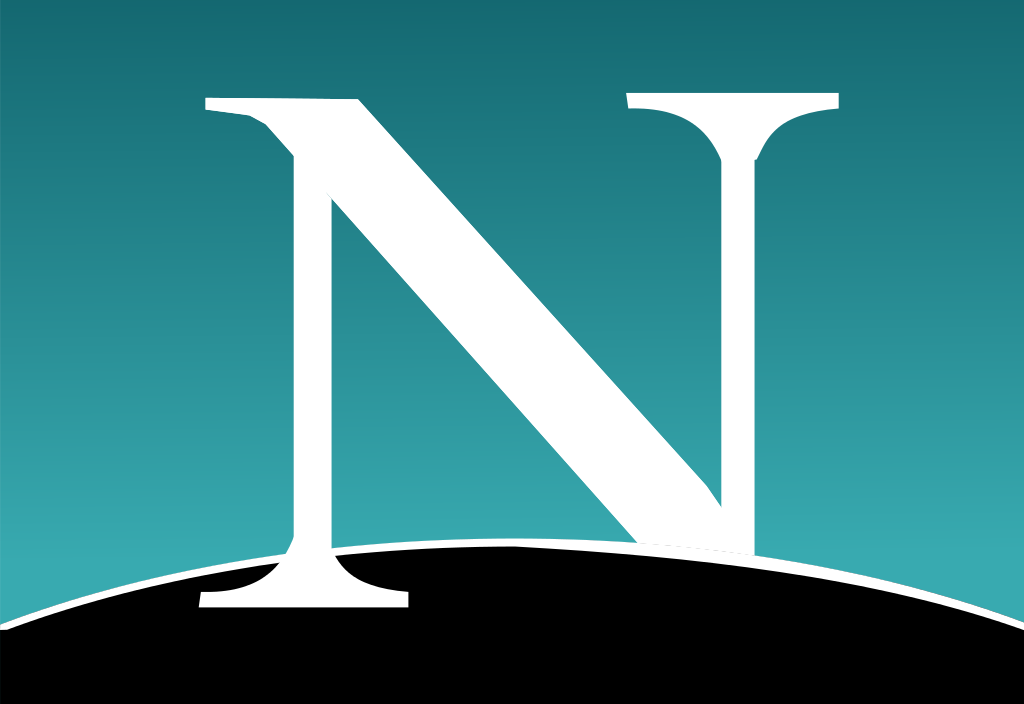The late 1990s were a time of rapid growth and innovation in the internet industry. As more and more people began to use the internet, the browser market became increasingly competitive, with companies vying for dominance in a rapidly expanding market. At the center of this competition was Netscape Navigator, the first widely used browser, and Microsoft’s Internet Explorer (IE), which would eventually emerge as the dominant player in the market. This article will explore the history of Netscape Navigator and the “browser wars” that were fought between Netscape and IE during the late 1990s and early 2000s.
The Rise of Netscape Navigator
Netscape Communications Corporation (originally Mosaic Communications Corporation) was founded by Jim Clark on April 4, 1994. It was the first company to capitalize on the World Wide Web, and its flagship software was one of the first web browsers to achieve widespread popularity and played a crucial role in the development of the internet industry. Its rise to prominence in the mid-1990s is a story of innovation, timing, and savvy marketing blazing the trail as the internet’s first commercial web browser.
In the early days of the internet, web browsing was a relatively niche activity mainly in the domain of tech-savvy individuals and academic institutions. However, as the web began to grow and evolve, it became clear that there was a huge opportunity for companies that could make browsing the web accessible to a wider audience for the first time.
Enter Netscape Communications Corporation, a startup founded in 1994 by Silicon Valley entrepreneur Marc Andreessen and several other former employees of the National Center for Supercomputing Applications (NCSA) at the University of Illinois. The company aimed to create a user-friendly web browser that could make browsing the web as easy and intuitive as using any other software application.
The team at Netscape set to work developing what would become Netscape Navigator. The browser was built around a new technology called the “Netscape Communications Protocol,” or NCP, which was designed to make it easy to browse the web and access different websites.
One of the key innovations of Netscape Navigator was its support for “frames,” which allowed developers to divide a web page into multiple sections that could each display different content. The Netscape browser made it possible to create more complex and dynamic websites that could incorporate different types of media, such as images and videos.
Another key feature of Netscape Navigator was its support for plug-ins, which allowed developers to add new functionality to the browser. One of the most popular plug-ins was the Adobe Flash Player (formerly Macromedia Shockwave Flash), which made it possible to view animations and videos directly within the browser.
Netscape Navigator was also notable for its ease of use and intuitive interface. Unlike some earlier web browsers, which were designed primarily for technical users, Netscape Navigator was built with the average person in mind. It featured a simple, graphical interface that made it easy to navigate the web and access different websites.
As Netscape Navigator began to gain popularity, it quickly became clear that the browser was well-positioned to take advantage of the growing interest in the internet. The mid-1990s saw a surge in interest in the web, as more and more people began to realize its potential as a platform for communication, commerce, and entertainment.
Netscape Navigator was also helped by some savvy marketing efforts on the part of Netscape Communications. The company used a range of tactics to promote the browser, including advertising campaigns, promotions, and partnerships with other companies.
One of the most successful marketing efforts was the “Download Day” campaign, which was launched in 1995. The free download campaign encouraged users to download Netscape Navigator on a specific day, in order to set a new record for the most downloads of a single software program in a single day.
The Download Day campaign was a huge success, and it helped to raise awareness of Netscape Navigator and the benefits of browsing the web. It also helped to cement the browser’s position as the leading web browser of the mid-1990s.
By the late 1990s, Netscape Navigator had become the dominant web browser, with an estimated 80% market share. Its success had a profound impact on the internet industry, helping to popularize the web and paving the way for the development of new technologies and business models.
However, Netscape Navigator’s dominance was not to last. In the late 1990s, Microsoft began to take notice of the growing importance of the web and decided to enter the browser market with its own product, Internet Explorer.
Microsoft’s entry into the market marked the beginning of the “browser wars,” a period of intense competition between Netscape Navigator and Internet Explorer. While Netscape Navigator had initially dominated the browser market, Microsoft’s deep pockets and aggressive tactics quickly allowed Internet Explorer to gain ground.
The Browser Wars Begin
The release of Microsoft Internet Explorer marked the beginning of the “browser wars” between Netscape Navigator and IE. The competition was fierce as both companies sought to gain dominance in the browser market, which was rapidly expanding due to the growth of the internet.
Microsoft continued to improve Internet Explorer, releasing versions 2.0 and 3.0 in quick succession which included a more seamless integration with Microsoft Windows. With the release of Internet Explorer 4.0 in 1997, Microsoft began bundling the browser with the Windows operating system, which drew criticism from competitors who argued that it was anti-competitive.
Despite this controversy, Internet Explorer’s market share began to grow rapidly, reaching nearly 50% by the late 1990s. Netscape, meanwhile, struggled to keep up with Microsoft’s pace of development and faced financial difficulties.
In an attempt to regain market share, Netscape released the open-source browser Mozilla in 1998. While Mozilla gained some traction among tech-savvy users, it failed to make significant inroads against Internet Explorer.
The End of Netscape Navigator
By the late 1990s, Netscape was facing financial difficulties, and the company’s leadership began to explore the possibility of selling the company to a larger firm.
The acquisition of Netscape Communications by America Online (AOL) in 1998 was one of the most significant events in the history of the internet industry. At the time, Netscape Navigator was the dominant web browser, and AOL was the largest provider of internet services in the world. The acquisition represented a major strategic move for both companies, and it would have significant implications for the future of the internet.
The acquisition was announced in November 1998, and it was valued at $4.2 billion. Under the terms of the deal, AOL would acquire all of Netscape Communications’ assets, including its web browser, its email software, and its web portal.
The acquisition was widely seen as a major coup for AOL, which was looking to expand its presence in the rapidly growing internet industry. At the time, AOL was primarily known for its popular dial-up internet service, which had millions of subscribers around the world. However, the company recognized that the future of the internet lay in web-based services and content, and it saw the acquisition of Netscape Communications as a way to gain a foothold in this rapidly expanding market.
For Netscape Communications, the acquisition was a bittersweet moment. The company had pioneered many of the key technologies and standards that made the internet what it is today, and its web browser was the dominant player in the market. However, the company was facing intense competition from Microsoft, which was aggressively promoting its own web browser, Internet Explorer.
In many ways, the acquisition by AOL was a lifeline for Netscape Communications. The company had been struggling to compete with Microsoft’s deep pockets and aggressive marketing tactics, and it was facing an uncertain future. By joining forces with AOL, Netscape Communications was able to leverage the resources and expertise of one of the most powerful companies in the internet industry.
The acquisition also had significant implications for the broader internet industry. At the time, there was a growing concern that Microsoft’s dominance in the browser market was leading to a monopolization of the internet industry. By acquiring Netscape Communications, AOL was seen as a potential counterbalance to Microsoft’s power, and many industry observers saw the move as a positive development for the future of the internet.
However, the acquisition was not without its challenges. One of the biggest issues facing AOL was how to integrate Netscape Communications’ products and services into its existing business. The two companies had vastly different cultures and business models, and there were concerns about how they would be able to work together effectively.
In addition, the acquisition came at a time of significant turmoil in the internet industry. The dot-com bubble was beginning to burst, and many internet companies were struggling to survive. AOL itself would face significant challenges in the years following the acquisition, as it struggled to adapt to the rapidly changing landscape of the internet industry.
Despite these challenges, the acquisition of Netscape Communications by AOL remains one of the most significant events in the history of the internet industry. It represented a major strategic move for both companies, and it had significant implications for the future of the internet. While Netscape Navigator may no longer be in use, its impact on the internet industry as a whole will be felt for years to come.
Lessons Learned from the Browser Wars
The browser wars had a significant impact on the internet industry and helped shape the modern web landscape. One of the most important lessons learned from the browser wars was the importance of innovation and agility in a rapidly changing market.
Netscape’s early success was due in part to its willingness to embrace new technologies and push the boundaries of what was possible on the web. However, as Microsoft began to catch up, Netscape’s pace of innovation slowed, and the company was unable to keep up with the competition. This serves as a reminder of the importance of continuously innovating and adapting to changing market conditions.
Another lesson from the browser wars was the importance of user experience. Netscape Navigator was successful in part because of its ease of use and intuitive interface, which made it accessible to a wide range of users. However, as Internet Explorer improved its own user experience, Netscape began to lose ground. This highlights the importance of prioritizing user experience and ensuring that products are designed with the end user in mind.
The browser wars also demonstrated the dangers of monopolies and anti-competitive practices. Microsoft’s bundling of Internet Explorer with the Windows operating system drew criticism from competitors and ultimately led to a high-profile antitrust case against the company. This serves as a reminder of the importance of competition in driving innovation and preventing the formation of monopolies.
The Legacy of Netscape Navigator & Netscape Comm
While Netscape Navigator may have ultimately lost the browser wars, its legacy lives on. The browser played a key role in popularizing the internet and making it accessible to a wide range of users. It also helped lay the foundation for modern web technologies and standards, including HTML and JavaScript.
In addition, the development of Netscape Navigator and the browser wars that followed helped shape the modern tech industry. The intense competition between Netscape and Microsoft set the stage for future battles between tech giants, such as Apple and Google. It also demonstrated the importance of user experience, innovation, and competition in driving technological progress.
Netscape Communicator was a suite of internet applications released by Netscape Communications Corporation in 1997. It was a follow-up to the company’s popular Netscape Navigator web browser, which was first released in 1994.
Netscape Communicator included a web browser, email client, newsreader, and HTML editor, all integrated into a single software package. This made it a convenient and user-friendly option for people who wanted to browse the web, check their email, and create web pages all from one program.
One of the key features of Netscape Communicator was its support for web standards, including HTML 4.0 and Cascading Style Sheets (CSS). This helped to advance the development of modern web technologies and helped to standardize web development practices. The application also supported the use of Java applets on a web site, which was groundbreaking for its time.
In addition to its technical innovations, Netscape Communicator also had a significant impact on the internet industry as a whole. By bundling together a suite of internet applications -including netscape mail- it helped to popularize the idea of an integrated software suite with a graphical user interface, and helped to pave the way for other similar products, such as Microsoft Office and Google Apps on personal computers.
Despite its initial popularity, Netscape Communicator ultimately fell out of favor as competition in the browser market intensified. However, it remains an important part of the history of the internet industry and played a key role in the development of modern web technologies and standards. Near the end of December 2007, Tom Drapeau, director of the AOL Netscape brand announced that development would be halted on Feb 1, 2008. Netscape’s browser v9.0.0.6 marked the final version of the web browser which was released on February 20, 2008.
Relationship to Firefox:
Mozilla Firefox was first released in 2004. It was developed by the Mozilla Foundation, which was created as a spin-off from Netscape in 1998. Firefox was developed with many of the same people who worked on Netscape, and it is often seen as a successor to Netscape. However, Firefox was developed from scratch, and it is not based on the original Netscape source code.
Conclusion
The browser wars of the late 1990s and early 2000s were a pivotal moment in the history of the internet industry. The competition between Netscape Navigator and Internet Explorer helped shape the modern web landscape and laid the foundation for the tech industry as we know it today. While Netscape Navigator may have ultimately lost the battle for dominance in the browser market, its legacy lives on, and the lessons learned from the browser wars continue to inform the development of new technologies and products.


